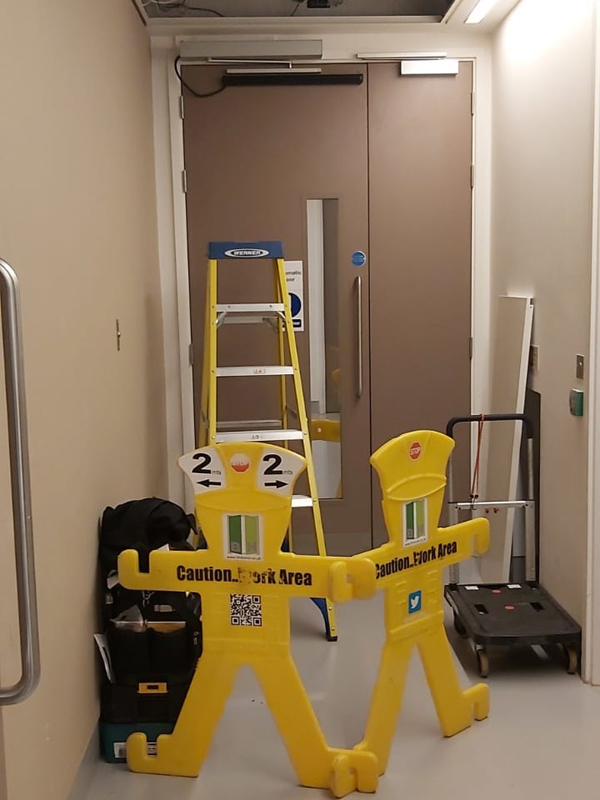Automatic Fire Door Compliance, New Biochemistry At University Of Oxford
Following a smoke vent test it was found that the existing operator did not have a spring return in the event of power failure so the door would not close during a fire test.
The purpose of an emergency exit in a building is a special exit for emergencies such as a fire: the combined use of regular and special exits allows for faster evacuation, while it also provides containment of the smoke and heat in the event of a fire.
For compliance to BS9999, automated fire escapes should be serviced and inspected every 6 months. This may also be a stipulation of your building insurance, your lease agreement or part of your Fire risk assessment for your fire doors to be maintained.
Fire escapes and automated fore doors generally are only tested weekly, used in an emergency, but there are some which are used constantly as a means to circulate a building so the components will be subject to greater wear and tear.
This is where the design and specification are critical to ensure that the right product is installed to ensure it matches the operational needs.
Fire escapes need to be –
Robust to be able to handle the usage
Easy to open
Provide security when closed
Be self-closing / locking
Withstand weather and environment

We provided a quotation to replace the operator with a Dorma ED100 specifically rated for internal fire doors with integral spring return. To save costs we reused the existing safety sensors, activation devices and interfaced the operator with the fire alarm system.
On completion, commissioned and tested with the fire alarm to ensure the door was now compliant.
